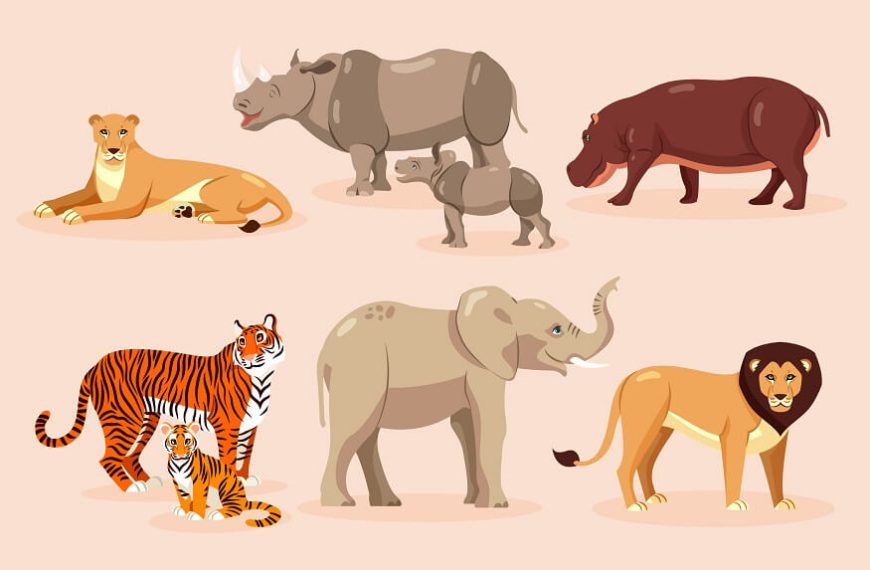Think of your favourite thriller for a second. Movie or novel. Got it? Well, the shocker is not the plot twist in that thriller. Rather that you know more about that thriller than the animal kingdom.
They do not say that 70% of the world is unexplored for nothing. Who knows how many mystical, magical creatures are really out there! All we know is that there are 7.77 million known species of animals in the world. Whopping number right? It can be way, way more mind-blowing. If only we knew.
But let us focus on the positive, shall we? We still know plenty of things about those 7.77 million species. For example, we know that most of them (if not all) can be called either of the three things you see in the title of this blog right above two paragraphs from here. These labels are actually quite important. Why? Because they help you (and by extension your kids) understand the animal world a whole lot better.
So if you want to make some solid headway into teaching your kids about the animal kingdom, we suggest you brush up your knowledge of what exactly are herbivores, carnivores, and omnivores. After all, when you know right is when you can teach right.
What are herbivores, carnivores and omnivores? Explain please!
We know that is your question numero uno so let us jump straight to it! Herbivores are, to put it very, very, very simply, plants eating diffrent animals. Carnivores are just the exact opposite. These animals only eat meat. And omnivores are sort of like the balance between the two. Yin and yang if you will because these animals eat both plants and meat.
There! That should clear up what the three of them really are.
So what really makes all three of them so different from each other?
Each of them, and we mean each of them, has more differences between them that are way more than just their diets. In fact, their diet is shaped by attributes that are unique to them. Or vice versa. It probably works both ways. In any case, they are all pretty much inextricably linked.
So here are all the unique characteristics along with herbivores, carnivores and omnivores examples!
Herbivores
Let us start with what you might think are the gentlest of the lot. But mind you, herbivores can be pretty powerful too. And dangerous. Do not think they are meek and mild just because of their diet.
They only and only eat plants. That obviously does encompass things like fruits and vegetables too. Naturally. However, you will often find them merrily munching on a host of leaves, stems and roots. That is just their favourite thing!
Herbivores are herbivores because they have physical features that make them herbivores. Does it make sense? No? Well, what we mean to say is that herbivores have physical attributes such as say a super long neck (think giraffes) or extremely tough molars (think hippos), which allow them to chomp on all the plants they love with ease.
This one will stump you! Herbivores may actually have really, quite large digestive systems. We mean tummies with multiple chambers or super long intestines, which help them digest all of the plants they eat. And they eat a lot of plants, trust us. Because to derive nutrition from plants, you really need to chow down a huge quantity of them. You do not have to do the same with meat.
Well, here is something about herbivores we bet you
did not expect! They can be picky eaters! They will often
choose to eat just the stem or the root or something like
that if they like it a lot.
You will find herbivores everywhere! From deserts to
mountains, they are everywhere.
Carnivores
Touted as wild, carnivores can actually be found in your house too! Shocked? Do not be. The humble cat is a carnivore and they coexist with us quite lovingly. Here are more characteristics of this lot!
Animal protein-rich meat is the only thing that carnivores
like to eat. There can be no substitute to that.
One thing that kids will find really cool about them is how sharp
the claws and teeth of carnivores are. They are meant to be just
the best hunters there are!
Their sense of smell is insanely strong. In fact, that is what
helps carnivores to hunt so well! They can smell their prey
from a mile away as they say.
From stalking to ambushing, there is nothing carnivores will
not do to catch their prey!
And here is the most interesting thing about them! They can be
a pack of hunters. Or lone wolves (quite literally!).
Omnivores
We are here now with the yin and yang of the three! Omnivores just get the best of both worlds. Which means you can safely say they are probably the least fussy eaters of these three. But there is more to carnivores. Check it out!
Yep, they love eating both plants and animals. No discrimination here. Their digestive system is super smart and can easily process both the types of foods they eat. No problem. A few of them have pretty strong teeth and razor-sharp claws that help them forage for food. Again, a sign of how smart they are. And how adaptive too. Environment is hardly ever an issue for them when it comes to survival due to their super adaptive skills and food choices! They are big time opportunists! Basically they will eat anything they get. Always up to seize the day, omnivores.
List of herbivores, carnivores and omnivores animals
We have already told you enough about all three of them. Now it is time for examples! Here is a list of herbivores, carnivores and omnivores.
Herbivores
Sheep Horse Cow Goat Giraffe Elephant Deer Kangaroo Zebra Moose Rabbit Llama Black bear Hippopotamus Chimpanzee
Carnivores
Tiger Cheetah Lion Jaguar Wolf Shark Eagle Leopard Coyote Weasel Hyena Otter Fox Ferret Cougar Badger
Omnivores
Humans Crows Racoon Raven Mouse Opossum Hedgehog Wild boar Pig Squirrel Chipmunk Civet Skunk Rats Flamingo
Word to the wise. The above list of herbivores, carnivores and omnivores animals is not exhaustive. But it is informative! Just like all of our preschool classes are at EuroKids! The entirety of our curriculum has been designed to be fun and educational. If you want more information about it, you should visit us. Any of our branches nearest to you will do.
















